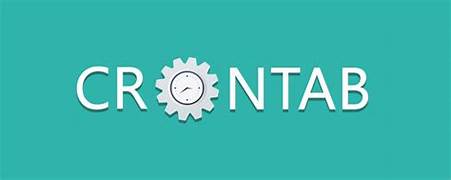Set It and Forget It: Task Scheduling with Crontab
 Ahmed Raza
Ahmed Raza
Crontab (short for "cron table") is a powerful utility in Unix-like operating systems that allows users to schedule and automate the execution of tasks at specified times. The utility is based on the cron daemon, which continuously runs in the background to check the system's cron schedules and execute the scheduled tasks when necessary. This functionality is particularly useful for automating repetitive administrative tasks, backups, system monitoring, and other routine processes without human intervention.
How Crontab Works
Crontab operates through a configuration file, commonly referred to as a cron table or crontab file, which contains a list of commands to be run at scheduled times. The cron daemon checks this file to determine when and which tasks need to be executed. Each entry in the cron table is associated with a time string and the specific command to run.
A typical crontab file consists of six fields, as shown below:
* * * * * /path/to/command
Each field represents a specific unit of time or a condition when the command will execute:
Minute (0 - 59)
Hour (0 - 23)
Day of month (1 - 31)
Month (1 - 12)
Day of week (0 - 6) (Sunday = 0)
Command to be executed
Field Values
Each of the time fields can be defined using the following values:
A specific value (e.g.,
5in the minute field means "run at the 5th minute of the hour").A range of values (e.g.,
1-5in the day-of-week field means "run on Monday through Friday").A comma-separated list (e.g.,
1,2,3means "run on days 1, 2, and 3").A wildcard
*which means "every possible value" (e.g.,*in the minute field means "run every minute").A step value (e.g.,
*/5in the minute field means "run every 5 minutes").
Crontab Management: How to View, Edit, and Remove Cron Jobs
View the
crontabfileTo view your current scheduled cron jobs, use the command:
crontab -lThis will list all the scheduled tasks for the current user.
Edit the
crontabfileTo edit the crontab file, use:
crontab -eThis opens the crontab in your default text editor (usually Vim or Nano). You can then add, modify, or remove scheduled tasks.
Remove the
crontabfileIf you want to delete all your cron jobs, use:
crontab -r
Few Practical Examples
1. Running a Backup Script Daily at Midnight
Suppose you want to run a backup script every day at midnight. The crontab entry would look like this:
0 0 * * * /path/to/backup-script.sh
This runs the script located at /path/to/backup-script.sh at 00:00 (midnight) every day.
2. Running a Cleanup Script Every Sunday at 2:30 AM
To run a cleanup script every Sunday at 2:30 AM, the crontab entry would be:
30 2 * * 0 /path/to/cleanup-script.sh
This schedules the cleanup script to execute at 2:30 AM on Sunday (day 0 in the cron table).
3. Running a Command Every 15 Minutes
If you want to run a command every 15 minutes, you can use the following crontab entry:
*/15 * * * * /path/to/command.sh
This will execute command.sh every 15 minutes, regardless of the hour, day, or month.
4. Running a Task on Specific Days of the Week
To schedule a task to run at 9:00 AM on Mondays, Wednesdays, and Fridays, the crontab entry would be:
0 9 * * 1,3,5 /path/to/task.sh
This command will run at 9:00 AM on Monday (1), Wednesday (3), and Friday (5).
Tips and Best Practices
Check Command Output: It’s a good practice to redirect the output of your cron jobs to a log file, so you can check for errors. For example:
0 0 * * * /path/to/script.sh >> /var/log/script.log 2>&1Use Absolute Paths: Always use absolute paths for both commands and files. Cron may not load the same environment variables as your normal shell, which can result in commands failing if relative paths are used.
Avoid Overlapping Jobs: Be cautious about scheduling jobs that may take longer than the time between successive executions, to avoid overlapping processes. Use a lock mechanism or ensure that the task duration is shorter than the frequency.
System-Wide Crontab: You can also edit system-wide cron jobs by editing the
/etc/crontabfile, or placing files in the/etc/cron.d/directory.
Conclusion
Crontab is an essential tool for automating repetitive tasks in Unix-like systems, offering great flexibility for scheduling and running commands. By using crontab, system administrators and developers can save time and ensure tasks run smoothly without manual intervention.
For further information and detailed documentation on crontab, refer to the official cron documentation:
Subscribe to my newsletter
Read articles from Ahmed Raza directly inside your inbox. Subscribe to the newsletter, and don't miss out.
Written by

Ahmed Raza
Ahmed Raza
Ahmed Raza is a versatile full-stack developer with extensive experience in building APIs through both REST and GraphQL. Skilled in Golang, he uses gqlgen to create optimized GraphQL APIs, alongside Redis for effective caching and data management. Ahmed is proficient in a wide range of technologies, including YAML, SQL, and MongoDB for data handling, as well as JavaScript, HTML, and CSS for front-end development. His technical toolkit also includes Node.js, React, Java, C, and C++, enabling him to develop comprehensive, scalable applications. Ahmed's well-rounded expertise allows him to craft high-performance solutions that address diverse and complex application needs.